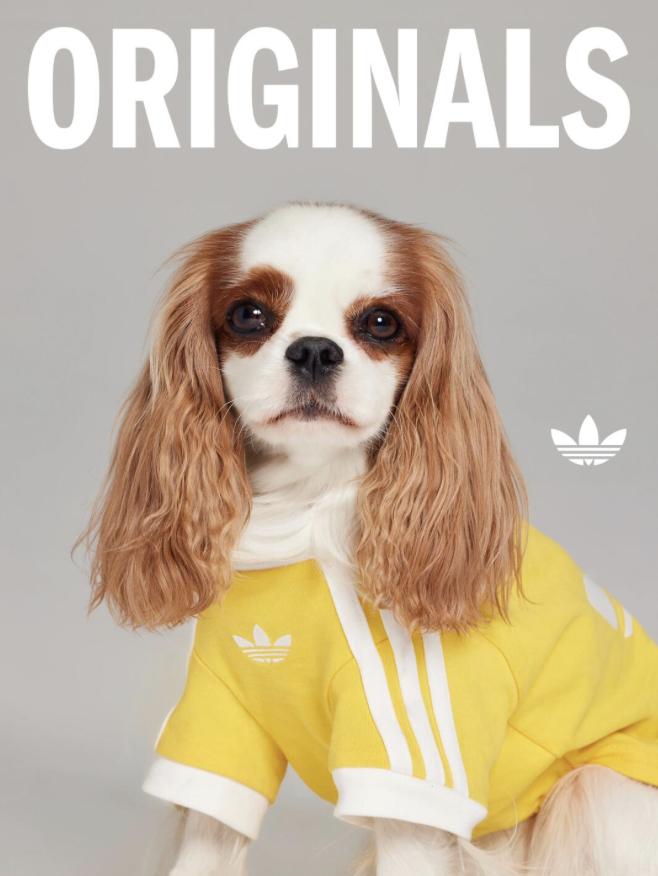
Read More《叫好难叫座,宠物服饰生意是“小而美”还是“小而难”?》
Positive Reviews: The Pet Apparel Industry Shows Demand Upgrades and Market Potential, Driven by Dual Tracks for Industrial Innovation
In recent years, the “boom” in the pet apparel industry is not accidental but the result of the combined effects of multiple demand upgrades and market changes. As can be seen from the news, this niche sector is evolving from a “niche interest” to an industry driven by “dual tracks”, and its positive significance is mainly reflected in the following three aspects.
First, the “essentialization” of functional needs has reconstructed the basic value of pet apparel. In the past, pet apparel was often regarded as an “emotional projection of the owner”, but with the popularization of the concept of “scientific pet – raising”, its functional value has gradually been recognized by consumers. For example, in the news, Huahua, a user from Guizhou, chose “yoga clothes” for her Labrador, with the core requirement being to prevent bacteria and reduce the risk of skin diseases; Qilin, a user from Northeast China, regarded pet apparel as “essential protection” due to the severe cold climate. Behind these cases is consumers’ in – depth understanding of the physiological characteristics of dogs – small dogs, short – haired dogs, and elderly dogs have weak cold – resistance abilities and really need external warmth; environmental factors such as bacteria in the grass and ultraviolet rays also make protective apparel with a “wrapping design” a necessity. This “essentialization” of demand directly promotes the transformation of pet apparel from an “optional decoration” to a “health necessity”, laying a stable consumer foundation for the industry.
Second, the “symbolization” of emotional and social needs has expanded the industry’s growth space. When pets are regarded as “family members” and “social assets”, their apparel naturally becomes a carrier for the owner’s emotional expression and identity. In the news, Xiaolu, a user from Shanghai, bought “Chanel – style” clothes for her Maltese, with the core motivation being “social display” – at pet owners’ gatherings, the dog’s appearance becomes an extension of the owner’s aesthetic taste; on social media, photos of well – dressed pets receive high likes, further strengthening the consumption logic of “paying for cuteness”. This “self – pleasing” demand not only gives rise to the emergence of design brands (e.g., users are willing to pay 500 – 700 yuan for design – style products), but also promotes the cross – border entry of fashion brands. International giants such as LV and Adidas transform pet apparel into “emotional connection symbols” through strategies like “matching styles for humans and pets” and “trendy limited editions”, which not only meet the Z – generation’s need for “everything can be socialized” but also inject new impetus of high – end and fashionable elements into the industry.
Finally, the overseas market and capital attention provide long – term growth possibilities for the industry. As mentioned in the news, many factory – based brands rely on overseas orders for survival. The demand for outdoor clothing for large dogs in the European and American markets and the preference for the “kawaii” style in the Japanese and Korean markets provide differentiated opportunities for domestic enterprises. In addition, the continuous attention of capital to the pet economy (such as the release of the “Investigation on the Prospects of the Chinese Pet Supplies Market and Strategic Research on Investment and Financing from 2025 – 2030”) is also promoting the industry’s transformation from being “small, scattered, and disordered” to “brand – oriented”. Although the current domestic market is still dominated by OEM and niche brands, the dual – wheel drive of functional and emotional needs, combined with the support of overseas expansion and capital, the potential of the pet apparel industry cannot be underestimated.
Negative Reviews: The Industry’s Pain Points Are Difficult to Solve, and the Road to Scale and Branding Is Full of Challenges
However, behind the “bustle” of the pet apparel industry, there are many challenges that cannot be ignored. From product development to market operation, from consumer experience to brand strategy, the industry’s “small but beautiful” situation is facing the reality of being “small but difficult”.
First, the complexity of product development has become the core barrier to scale. Different from human clothing, the pattern design of pet apparel needs to be based on the physiological characteristics of dogs, and the great differences in dog breeds’ body sizes (from 2 – 3 – pound Chihuahuas to over – 100 – pound Alaskan Malamutes) make it extremely difficult to standardize the sizing system. The observation of Fiona, the person in charge of Kuluulu, in the news is quite representative: human clothing only needs sizes from S to XL to cover most body sizes, while dog clothing may still not meet the needs even if there are more than 20 subdivided patterns. More importantly, the comfort of dog clothing needs to meet the three – dimensional indicators of back length, chest circumference, and neck circumference at the same time – any deviation in one dimension may cause discomfort to the pet (such as a too – tight neck circumference restricting movement or a too – small chest circumference compressing the torso). This complexity directly increases the design cost and the difficulty of supply – chain management, making it difficult for brands to cover the market with a “comprehensive” product line. They can only choose to “focus on specific dog breeds” (for example, Kuluulu only covers dogs weighing 5 – 25 pounds), which greatly limits the possibility of large – scale expansion.
Second, the limitations of market perception and consumption habits restrict the industry’s penetration. Although the young pet – owning groups in first – and second – tier cities have a relatively high acceptance of pet apparel, the overall market penetration rate is still low (the penetration rate of dog apparel is 63.5%, ranking fourth among pet supplies; the penetration rate of cat apparel is only 43.4%, ranking outside the top ten). More importantly, some consumers still have disputes over “whether pets need to wear clothes” – some people think that dogs’ own fur is warm enough, and clothing may damage their physiological regulation ability; others question that brands do not consider the comfort of pets, making clothing a “face – saving project for the owner”. In addition, the difficulty of returning and exchanging pet apparel further intensifies consumers’ concerns: the smell and hair residue after trying on make most merchants refuse returns and exchanges, and the high cost of consumers’ trial – and – error may dampen their willingness to repurchase.
Third, the “half – hearted” approach of cross – border brands exposes the ambiguity of the industry’s underlying logic. Currently, international brands such as LV and Adidas mostly enter the market through light – asset models such as “collaborations” and “limited editions”. In essence, they use pet elements as a supplement to their brand narratives rather than deeply cultivating the pet apparel track. Although this strategy can quickly detonate traffic with the help of brand assets (such as the out – of – stock situation of Adidas’ pet series both online and offline), it is difficult to solve the core problems of the industry – for example, international brands’ pet apparel only offers 3 – 5 sizes, which cannot cover the body sizes of most dogs. Instead, it may be criticized by consumers for “ignoring the needs of pets” due to the “poor fit”. This phenomenon reflects that most cross – border brands do not really understand the “pet attributes” of pet apparel but regard it as an “extension of human fashion”, resulting in a disconnection between products and actual needs.
Suggestions for Entrepreneurs: Focus on Pain Points, Balance Demands, and Find Differentiated Breakthrough Points
Facing the opportunities and challenges in the pet apparel industry, entrepreneurs need to break out of the “follow – the – trend” mindset and find differentiated breakthrough points from the dimensions of demand essence, product design, and channel strategy. The following are specific suggestions:
-
Deeply cultivate specific dog breeds and build a “precise pattern” barrier. In response to the pain point of the large differences in dog body sizes, entrepreneurs can focus on specific dog breeds (such as small and medium – sized dogs weighing 5 – 25 pounds) and establish a three – dimensional pattern database of “back length – chest circumference – neck circumference” through a large amount of actual measurement data. For example, the experience of Kuluulu is worth learning from – by limiting the target dog breeds and concentrating resources to optimize the patterns, it can not only reduce the design cost but also improve the product fit and establish a “professional” brand perception.
-
Balance functional and emotional needs and clarify product positioning. Entrepreneurs need to clarify the core value of their products: is it to solve pets’ health problems (such as anti – bacteria and warmth – keeping) or to meet the emotional needs of the owners (such as fashion and social interaction)? If the product is mainly functional, it is necessary to strengthen the technical endorsement of “scientific pet – raising” (such as cooperating with pet doctors to verify the protective effect); if it is mainly emotional, trendy elements should be incorporated into the design (such as collaborating with IPs and having matching styles for humans and pets), and the “social currency” attribute should be magnified through social media. It should be noted to avoid “trying to cover both ends” and resulting in a blurred positioning and ultimately losing core competitiveness.
-
Optimize the supply chain and channels to reduce operational risks. In response to the problems of inventory pressure and return and exchange difficulties, a flexible supply – chain model of “small – order and quick – response” can be adopted – adjust production quickly according to market feedback to reduce inventory backlog; at the same time, try a channel combination of “offline experience + online purchase”. Provide try – on services through offline stores (such as setting up pet fitting rooms) to reduce consumers’ trial – and – error costs and improve the repurchase rate. In addition, the overseas market is an important growth area. Entrepreneurs can combine the preferences of the target market (such as outdoor clothing for large dogs in Europe and America and the kawaii style in Japan and South Korea) and expand overseas business through OEM or self – owned brand models.
-
Strengthen user education and establish a “pet – friendly” brand image. In response to the dispute over “whether pets need to wear clothes”, entrepreneurs need to convey the concept of “scientific wearing” through popular science content (such as jointly issuing a report on dogs’ cold – resistance with pet hospitals) and user cases (such as showing the real effect of anti – bacteria clothing in reducing skin diseases). At the same time, incorporate details of “pet comfort” into the product design (such as adjustable Velcro and breathable fabrics) and obtain third – party testing and certification (such as pet product safety standards) to establish the brand’s trustworthiness as a “pet – friendly” one.
In conclusion, whether the pet apparel industry is “small but beautiful” or “small but difficult” ultimately depends on whether entrepreneurs can find a balance in demand insight, product design, and operational efficiency. Although the industry faces challenges such as complex patterns and low market penetration, the dual – wheel drive of functional and emotional needs, as well as the support of overseas expansion and capital, still provide entrepreneurs with opportunities for differentiated breakthroughs. Only by focusing on pain points and deeply cultivating users’ needs can entrepreneurs find their own “keys” in this industry that “dances with shackles”.
Latest:
- Startup Commentary”The Incomplete Evolution History of Bathing Centers”
- Startup Commentary”Starting from 358,800 yuan, Maserati Slashes Prices Drastically to Survive”
- Startup Commentary”Monopoly: Always the Best Business”
- Startup Commentary”A PE Giant Spent $6.6 Billion on a Crematorium”
- Startup Commentary”In a Low-Sports Year, Social Assets Still Hold Great Value”




